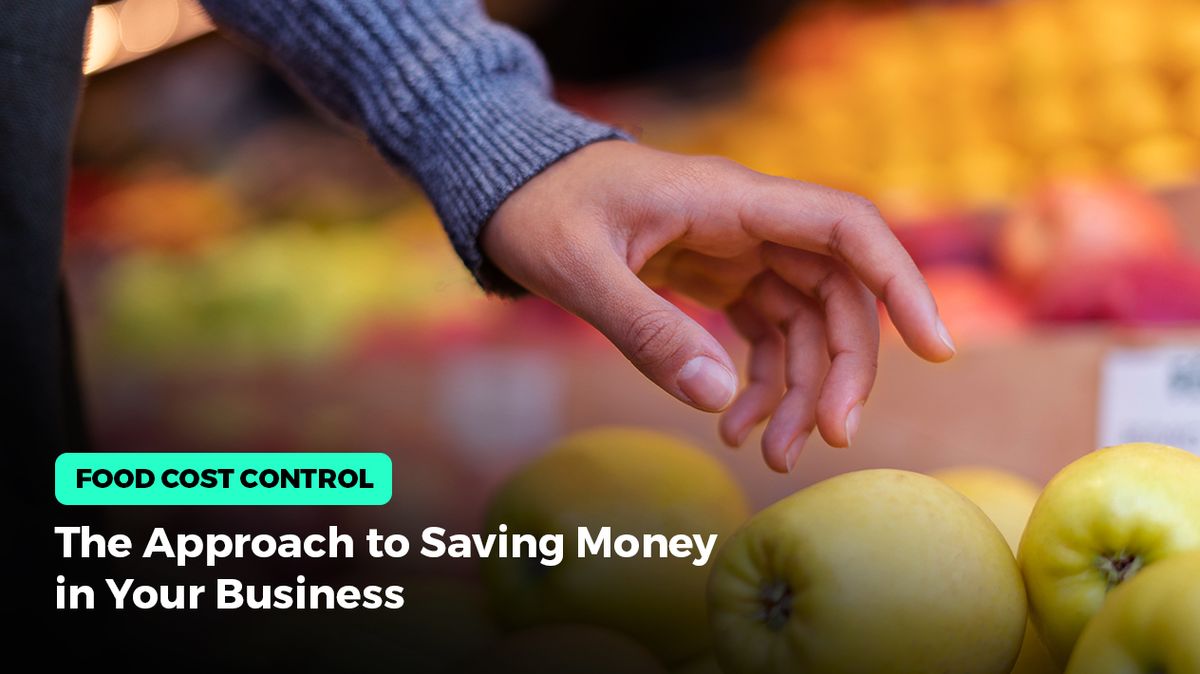Food Cost Control: The Approach to Saving Money in Your Business

Businesses may incur expenses for various reasons, so they should be prepared to identify them promptly and plan accordingly for their food cost control management. Food costs, the out-of-pocket expenses businesses incur for the supplies and raw materials they will use, are among their expenditures' most significant indicators and sources.
Therefore, the business will only have a clear picture of its income and expenses when it learns to control food costs effectively and no longer exceeds its budget.
How is this possible? Food cost control is not a one-time task. It is a continuous process for restaurants and food businesses to estimate their actual and ideal food costs while calculating food cost percentages and menu engineering.
Those rates are essential for a successful restaurant, as is a comprehensive understanding of labor expenses. Moreover, there is no pure food cost formula to process; the only option is to occupy yourself with these numbers individually.
How to calculate the food cost percentage?
To calculate a restaurant's food cost percentage, divide the total costs for price menu items for a given period by the total sales for that same period (e.g., the period cost) or split the cost of a menu item by the sales price (e.g., the plate cost), then multiply the ratio by 100.
Analyzing the food cost percentage is crucial to running a successful restaurant for several reasons. Firstly, food costs represent a significant expense for restaurants, making it imperative to monitor and manage them effectively to ensure profitability. Furthermore, restaurant owners can understand the relationship between expenses and revenue by calculating the food cost percentage using either the period cost or plate cost methods.
Setting strategic menu prices and format is another vital factor in defining food cost percentages. While perceived value and market demand play a role, the actual food costs determine the appropriate menu price and points to maintain a desirable profit margin for each menu item. Restaurant owners can make informed pricing decisions by considering plate costs and establishing a food cost percentage goal, ensuring a balance between profitability and customer satisfaction.
Furthermore, food costs directly contribute to food and labor expenses. As restaurant costs are controllable, monitoring food costs allows restaurant management to influence profits and losses directly. By tracking food costs regularly, restaurants can identify areas that require tighter control, leading to improved financial performance.
Lastly, understanding food costs helps restaurants achieve their cost targets. Restaurant owners can gain valuable insights into the trends and patterns affecting food expenses by observing how plate or period costs change. This information can guide decisions on when to adjust prices or implement various food cost controls and re-control measures to achieve financial objectives.
In conclusion, examining the food cost percentage is essential for restaurant success as it provides valuable insights into the business's financial health. By effectively managing food costs, restaurants can strategically price their menus, control expenses, and work towards achieving their financial goals.
How to calculate the most significant food cost percentages?
Food cost management is essential for restaurants and food businesses to determine their actual and ideal prices. The Actual Food Cost is determined by calculating the cost of food inventory at the start of a specific period (e.g., a day) and then subtracting the value of food inventory remaining at the end of that period. The outcome is the cost of food consumed during the given period.
Actual Food Cost Formula: Actual Food Cost = (Initial Inventory Value - Final Inventory Value) + (Purchases made during the period).
To determine the Ideal Food Cost, you should consider the total food cost for each menu item as well as the desired profit margin. The Ideal Food Cost aims to establish a price for each menu item that covers its cost and generates a profit.
Ideal Food Cost Formula: Ideal Food Cost = (Cost of the Menu Item) / (Target Food Cost Percentage)
Consider desired profit margins, overhead costs, and market demand when determining the target food cost percentage. The target food cost percentage can vary based on the type of restaurant, location, and business strategy. The target food cost percentage is calculated as follows:
Target Food Cost Ratio = (Total Cost per Unit Sold + Desired Profit) / Total Food Sales) x 100
A restaurant can evaluate its profitability and expense management efficiency by comparing actual and ideal food costs. Suppose the Actual Cost of food exceeds the Ideal Cost of Food. In such a case, it may indicate inefficiencies in inventory management or the need to adjust menu prices to reduce food costs and maintain a desired profit margin.
In addition to the factors above, restaurants should identify all the variables affecting their food costs to make informed decisions about menu pricing.
Controlling food costs and food waste
Food waste can have a significant impact on a restaurant's profitability at each of the above rates. Food waste occurs when edible food is discarded, spoils, or becomes inedible before being served to customers. Here's how food waste affects the numbers mentioned:
- Actual Food Cost: Food waste directly affects the Actual Food Cost of a restaurant. When food items are wasted, their cost is incurred but not recovered through sales, leading to higher Actual Food Costs. As a result, the actual food cost may be higher than anticipated, negatively impacting the business's financial health.
- Ideal Food Cost: Food waste can also impact ideal food cost calculations. The Ideal Food Cost is based on the cost of each menu item. The Ideal Food Cost may be underestimated if food waste is not accounted for in the cost calculations. This could lead to lower menu prices than necessary to cover the food cost and desired profit margin.
- Target Food Cost Percentage: The Target Food Cost is a crucial factor in pricing menu items appropriately. If food waste is not considered when calculating the target food cost percentage, the resulting prices may not accurately reflect the cost of preparing each dish.
- Prime Costs and Financial Performance: High food waste increases food costs, affecting overall prime costs (food and labor costs). As prime costs are controllable expenses, inefficient food waste management can reduce profits and overall financial performance.
To minimize the impact of food waste on the restaurant's numbers, businesses need to implement effective food waste reduction strategies like great menu engineering.
Menu engineering
The dramatic effects of food waste on a restaurant's future can be mitigated through menu engineering. There are numerous creative and innovative ways to design a menu for the restaurant industry and your restaurant in particular. The restaurant's menu includes not only the dishes and prices but also the restaurant's entire philosophy.
The menu should include elements that cater to the target audience and the type of cuisine served. For instance, if your target audience is younger and you serve Mexican cuisine, your menu should be structured to attract a younger audience (without excluding any customers) and include cultural references to Mexican cuisine. In addition, it would be beneficial if your menu had specific dishes with distinct shapes or hues so it could appeal to more and more customers.
Moreover, many restaurants offer the “dish of the day,” which is an excellent solution. For those daily specials, it is essential to consider your inventory management system and determine which products are available in large quantities.
In this way, restaurants avoid food waste because, without those plates, those ingredients would spoil or become damaged. In addition, if you observe that one of those dishes sells out quickly and is a popular menu item, you should include it on your main menu.
You should constantly be vigilant with your menu in order to make changes and modifications and take action based on the dishes that are becoming more or less popular. Only in this way can restaurants take control of their labor costs.
Conclusion
By reducing food waste, restaurants can improve their actual and ideal food costs, achieve their target food cost percentage, and enhance profitability. Reducing food waste is also environmentally responsible, contributing to sustainability efforts in the food service industry. Thus, the most important way to reduce food waste is to adopt a menu engineering strategy.
